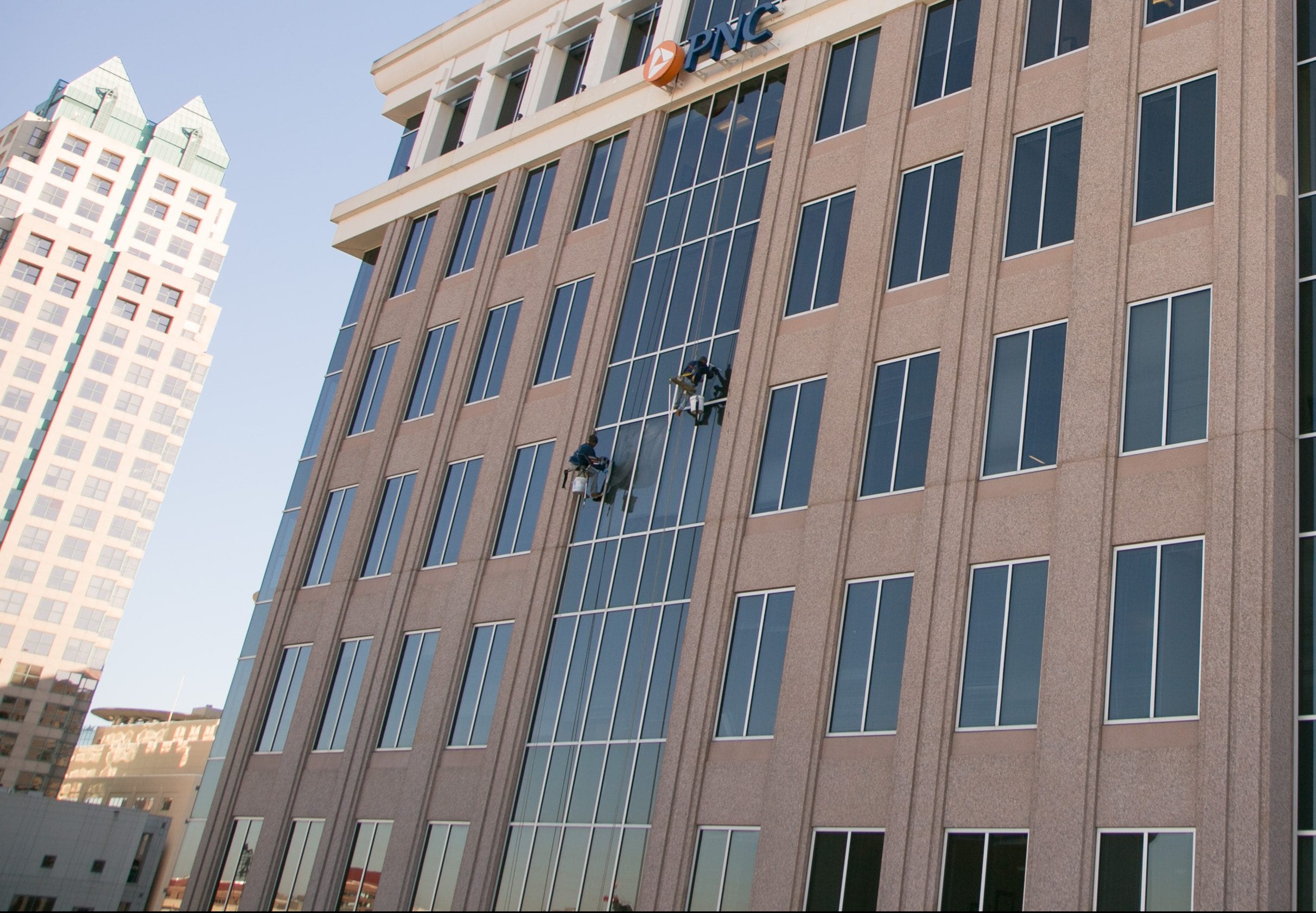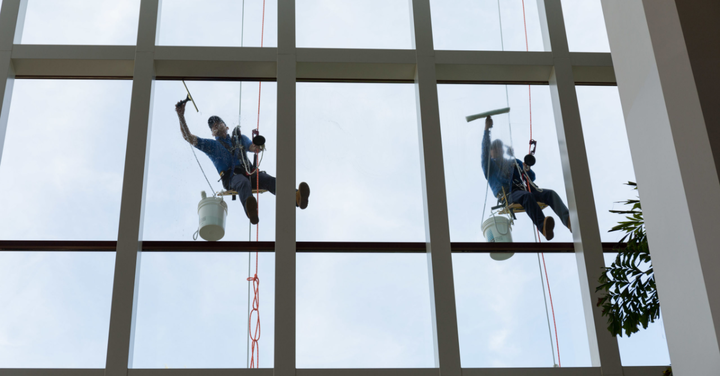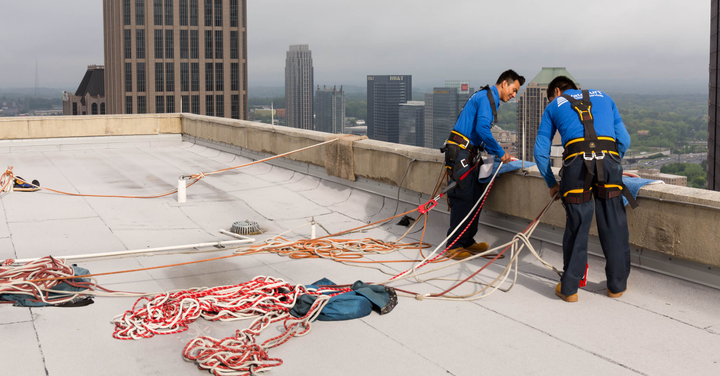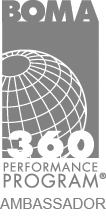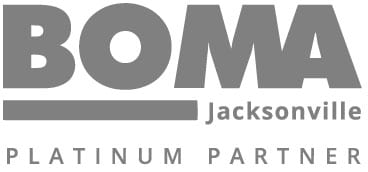Commercial leak detection and repair might seem farther down the to-do list with everything building managers have to track and monitor. However, knowing how to find and address a water leak in a commercial building is a significant point facility management teams cannot afford to overlook. A simple little water leak might seem like a minor issue, but in reality, must be addressed as soon as possible before it becomes a situation that needs emergency leak repair services.
If a little leak is ignored, it can eventually lead to significant water damage and other issues, leading to thousands of dollars in repairs. Home Advisors offers the following estimates for home repairs, which can be much higher for commercial properties. They estimate the cost of a plumber averages from $175 to $450 for a typical job, and average hourly rates can be as high as $200. Depending on the job, some plumbers will also tack on a flat rate or service fee that could be hundreds of dollars as well.
This is why commercial leaks and signs of water intrusion must be dealt with sooner rather than later. A water leak in a commercial building can be much more complicated and involved to fix, and the damage caused by delays in detection and repairs can be significant.
Common Areas For Water Leaks in Commercial Buildings
As a business owner, not much will frustrate and disrupt the way unexpected interruptions to daily operations and routines. These interruptions can pull attention away from vital services and processes or, even worse, directly cost the company time, money, and resources. Knowing and identifying degredation causes and signs is a vital part of building management. Leaks and water damages in commercial buildings are of major concern, especially as buildings age and begin to degrade and become more prone to breakdowns, system failures, and water intrusion.
According to FacilitiesNet “Water damage causes billions of dollars in financial losses across the real estate industry, and these claims can get extremely costly for businesses. Direct costs for cleanup, repairs, replacements, and mold remediation, as well as indirect costs, such as legal fees, delayed projects, or business interruptions, can wreak havoc on an organization’s profit and loss statement.” These expensive costs can all arise from the common leak and water infiltration points within commercial buildings:
- Roofing Leaks
- Plumbing Leaks
- Basement Leaks
- External Leaks
There are countless ways that even a seemingly minor leak from one of these points can turn into a major headache. Here are a few examples commercial building managers should be aware of:
- Suppose a pipe is allowed to leak for long periods of time, or suddenly bursts and goes undetected. In that case, it can cause significant damage to commercial building structures such as parking garages by the time visual signs identify it.
- Commercial leaks often occur in walls, which also causes some of the costliest damage to commercial properties. A small leak could go undetected for months behind a wall or even longer, leading to devastating structural damage.
- A source of water intrusion might not originate inside the building but rather seep in from outside. Poor roof and facade envelop maintenance, gaps in windows and doors, and degrading foundations allow water to seep in slowly.
- Even a minor pipe leak can cause severe damage to ceilings, carpet, and hardwood flooring. Even without structural damage, replacing ceiling panels and carpets and cleaning up afterward can be costly.
Facility managers and maintenance teams can stay on top of all this with best-in-class commercial leak detection, repair, and waterproofing services.
What Best-In-Class Rapid Commercial Building Leak Detection & Repair Services Look Like
Valcourt specializes in water leak detection services directed at commercial properties. Rapid leak detection and repair become accessible with a skilled and experienced team, state-of-the-art technology, and reliable services. A water leak pinpointed correctly saves companies time, money, and resources. Knowing how to avoid leaks and address problems sooner rather than later can also save companies a significant amount of time and money.
This accuracy helps to avoid unnecessary property damage that less experienced water leak detection methods can’t prevent. Ultimately, these best-in-service features make facility management more manageable and make property upkeep more affordable. Valcourt Building Services is the premier provider of all commercial property repair, inspection, and maintenance needs. With over 30 years of experience and tens of thousands of repairs and maintenance jobs completed, our team can assist facility management personnel with all building maintenance and leak repair services. No matter what your building requires, we have the knowledge and expertise for all commercial exterior maintenance needs.
Valcourt’s high-quality and best-in-class leak services translate into quick, accurate, and affordable benefits when and where they are most needed. With the following best practices and services, commercial building maintenance and upkeep becomes much more streamlined and efficient:
Fast and Reliable Service From Industry Experts
Best-in-class leak-related service providers provide commercial property owners with the fastest and most reliable services. They utilize the latest and safest access equipment in the industry in the hands of trained and experienced professionals to find, address, and prevent leaks when possible.
Real-Time communication and On-Demand Data Access
The best service providers provide a customer-focused approach to each project and will communicate effectively with all involved parties throughout the process. Fast response, prompt work completion, detailed follow-ups, customized services, and on-demand support ensure quality service for facilities management.
Professional Team of Local FM Providers
Best-in-class commercial facility managers and technical teams are trained and dedicated to providing quality service for all property owners. They know how to identify problem areas, implement appropriate solutions, document concerns, identify potential concerns, and communicate effectively.
Facility Protection and Security Options
Quality facility maintenance providers focus on keeping commercial buildings safe, secure, and operational by finding and repairing leaks that threaten daily functions and activities. If a building is behind on maintenance or not up to code, they can offer facility protection and security options to address this issue.
Proactive Management to Reduce Disruptions
Routine building checks and inspections of common leak areas can help ensure that minor issues are detected and addressed effectively. Disruptions and downtime can be minimized, and bottom-line profits become easier to manage with a proactive approach to commercial leak detection and repairs.
Commercial building maintenance and upkeep can become less stressful for facility maintenance teams with these best practices and services. Small leaks can quickly grow and lead to costly damages. This is why finding the best in class rapid lead detection and repair services, such as ProExpress from Valcourt, are vital for any facility management and maintenance program.
The ProExpress Valcourt Difference for Commercial Building Leak Detection
ProXpress covers all best-in-class services as part of Valcourt Building Services’ premier services, including restoration, waterproofing, and building inspections. Partnering with property owners and property managers, their team works to service all aspects of a building’s exterior.
The ultimate goal is improving facility management, monitoring building integrity, and unlocking the benefits of keeping buildings well maintained and in good condition. Benefits that include:
- Leak investigation, water intrusion testing, waterproofing maintenance, and repairs for water infiltration and damages.
- Minor exterior repairs for sealant, and waterproofing issues as well as concrete and facade repairs on commercial buildings and structures.
- Emergency safety concerns related to water intrusion, building leaks, and related damages and structural issues.
- Temporarily secure cracked or broken glass to avoid further damage while repair work begins in earnest.
- Proactive planning, scheduling, and monitoring of potential problem areas during and after renovation and construction projects.
- Prompt services to find, diagnose and address commercial leaks and offer quality assistance when needed the most.
- Fast, reliable, and proficient communication with team repair teams and building staff before, during, and after repairs.
- Trained and professional staff are always available to answer any questions and address any concerns that arise.
- Personalized protection of commercial properties focuses on individual needs and goals and offers best-in-class service.
- Proactive planning and preventative maintenance to ensure issues are caught early and addressed promptly.
Dealing with water leaks and issues is not something building managers want to face. But it is, unfortunately, a common occurrence today. Knowing who to call for best-in-class services remains a critical first step. Valcourt Building Services’ premier ProExpress leak detection and repair services are the best in the industry.
Keep Buildings Safe and Dry With Quality Commercial Building Leak Detection Services From Valcourt
Commercial leak detection and repair might seem like a little thing in the grand scheme of commercial building management and upkeep. However, knowing how to find and address a water leak in a commercial building remains vital to ongoing operations and the safe management of commercial properties.
Facility management teams cannot afford to overlook the warning signs of commercial building leaks and must ensure rapid leak detection and repair services are easily accessible. There are many ways that unaddressed leaks and water intrusion can turn into a major headache, all of which can be addressed with best-in-class services from Valcourt. Call today to get started.

